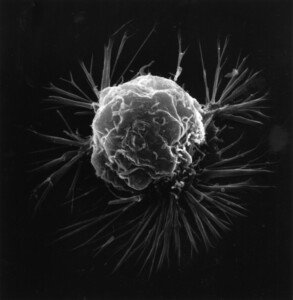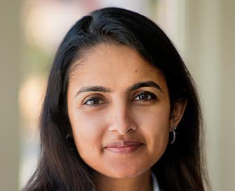MRI is a superb imaging tool for detecting breast cancer, even when compared to the combined methods of ultrasound and mammography.
“MRI is a cutting-edge way that we can detect breast cancers early on, especially in patients with dense breasts and family history of breast cancer,” says Resham Mendi, MD, a renowned expert in the field of medical imaging, and the medical director of Bright Light Medical Imaging.
“This type of MRI usually takes about an hour and involves injecting IV contrast.
“At this time, it is typically only used in women with very high risk of breast cancer or a personal history of breast cancer.
“With more advanced technology, in the next several years, there may be enough technology to allow fast MRIs, to use MRI as a screening tool in more women.”
Superiority of MRI in Breast Cancer Screening

Cancer.gov/Bruce Wetzel, Harry Schaefer
A 2015 Journal of Clinical Oncology has a study from the University Department of Radiology and Nuclear Medicine at the MedUni Vienna.
“In cases where there is even the slightest doubt, especially in women at increased risk, the obvious choice is MRI,” says lead study author Thomas Helbich in the paper.
The superiority of MRI is independent of a woman’s age, BRCA status and even breast density.
However, some women can’t tolerate lying inside the so-called tube for an hour.
Furthermore, the rate of false-positives, leading to anxiety-ridden call-backs, needs to be considered.
Dense Breasts
Women with dense breasts may be particularly interested in supplemental forms of imaging.
They know that a mammogram can miss tumors in dense breast tissue more often than in fatty breast tissue.
Yet this study shows that an MRI doesn’t care if breast tissue is dense.
The breast cancer detection rate for the 559 patients in the study was 90 percent.
The Study
• The 559 women were at increased risk for breast cancer.
• A total of 1,365 screening exams were done.
• MRI won by leaps and bounds.
• When MRI was combined with mammography, the detection rate increased by only five percent.
• Ultrasound alone did not detect any of the found BCs.
Recommendations by the Study
• An annual MRI should be done on women at high risk who have a strong family history of breast cancer as an alternative to surgical breast removal.
The paper points out that the combination of mammography and ultrasound cannot detect all types of breast cancer.
Women with dense breasts DO have the option to request an MRI and will likely have to pay out of pocket for it.




























